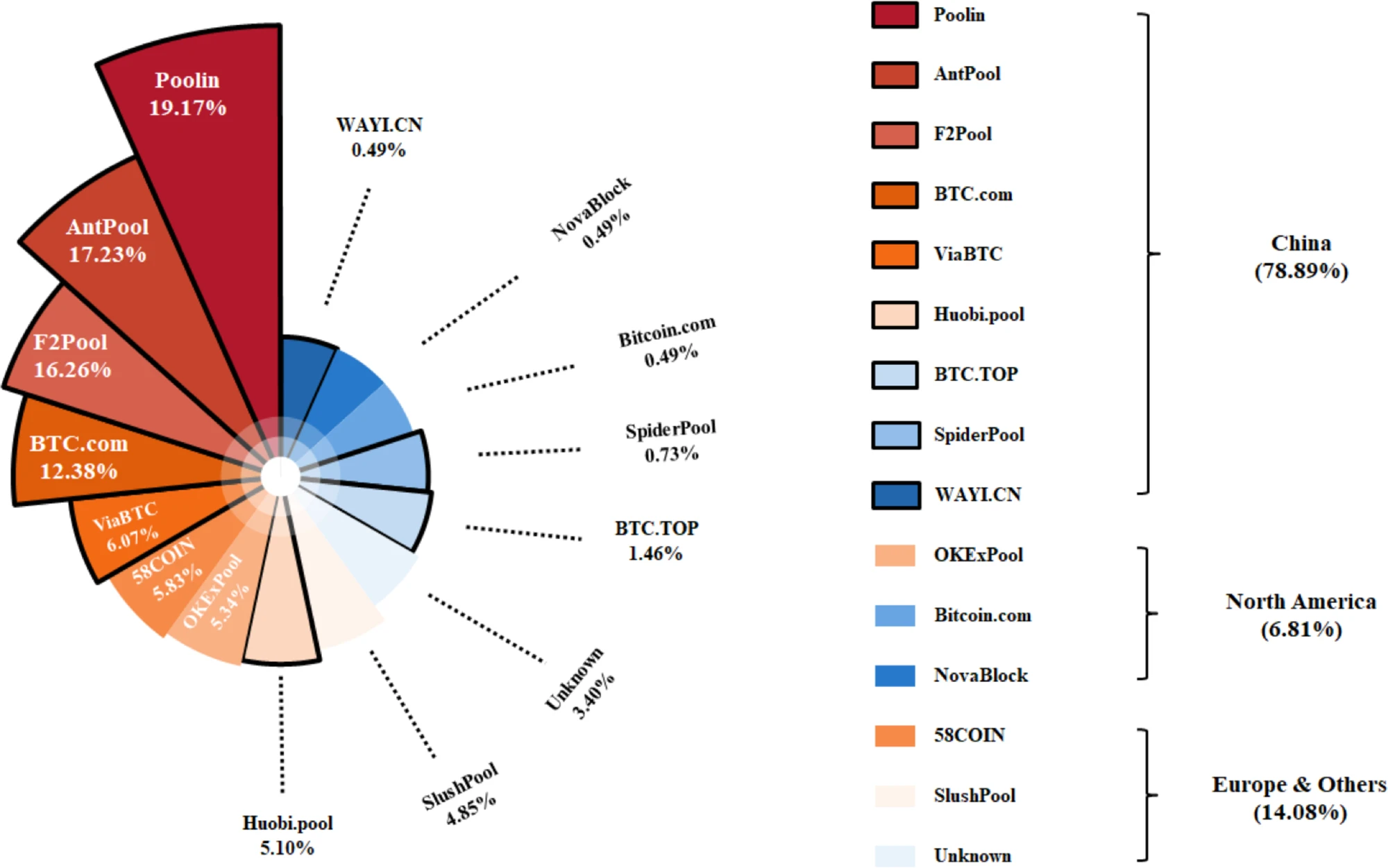Introduction
As cryptocurrencies continue to reshape global finance, their environmental toll remains a flashpoint of contention. Bitcoin, relying on the energy-intensive Proof of Work (PoW) mechanism, exemplifies this challenge. In 2025, mining operations consumed around 173 TWh of electricity, comparable to Australia’s annual usage, while emitting approximately 39.8 million tonnes of CO₂—on par with Slovakia’s emissions [2][4][G6]. This surge stems from a 38% year-over-year hash rate growth, peaking at 617 EH/s, with each Bitcoin transaction demanding about 1,335 kWh, enough to power a U.S. household for 45 days [1][2]. However, the narrative isn’t entirely bleak: 54% of mining energy now comes from renewables, up from previous years, signaling a shift toward greener practices [2][3]. Drawing from studies like the Cambridge Bitcoin Electricity Consumption Index (CBECI) and UN reports, this article explores these dynamics, balancing criticisms with technological advancements and policy responses [7][G1].

The Scale of Energy Consumption and Emissions
Bitcoin mining’s energy demands have escalated dramatically, with 2025 figures showing 173 TWh annually—down from 2021 peaks of over 143 TWh due to efficiency improvements, yet still a significant 0.78% of global electricity [2][3][4]. Per mined Bitcoin, operations generate 854,400 kWh, sufficient to sustain 81 U.S. households for a year [1]. The International Energy Agency warns that without curbs, cryptocurrency demand could balloon to 160 TWh by 2026, driven by rising hashrates and difficulty [1][G7].
Emissions tell a grimmer story: 39.8 million tonnes of CO₂ yearly, fueled by fossil fuel reliance in regions like Kazakhstan, where mining has triggered power outages and unrest [3][4][G13]. A 2025 Joule study underscores how geographic factors amplify this, with coal-heavy grids worsening impacts [6]. On social media, critics like environmental activists decry Bitcoin’s role in climate feedback loops, potentially adding 0.2–0.4°C to global warming by 2050 if unchecked, equating past emissions to 18 million cars [G16][G19]. Yet, proponents counter that Bitcoin’s footprint is just 0.03-0.06% of global CO₂, often overshadowed by traditional finance’s larger shadow [G18].
Beyond Carbon: Water, Waste, and Broader Impacts
Mining’s environmental footprint extends to water and land. A UN study estimates 1.65 km³ of annual water use, surpassing needs of 300 million in rural sub-Saharan Africa, while electronic waste matches the Netherlands’ output due to short-lived ASIC hardware [1][2][G1]. Nature’s 2025 report, using quantile regression, reveals mining’s negative effect on sustainability metrics like the load capacity factor, especially in high-energy scenarios [G7].
Electricity Required to Mine 1 BTC (Pre vs Post Halving)
| Period | Block Reward (BTC) | Avg Network Hashrate (EH/s) | Energy per BTC (kWh) |
|---|---|---|---|
| Pre-Halving (Mar 2024) | 6.25 | ~505 | ~104,741 |
| Post-Halving (Jul 2025) | 3.125 | 894.5 | 854,400 |
Sources:
- Network hashrate data: Hashrate Index, July 2025
- ASIC efficiency data: Energy and AI: Updated Assumptions for Global Mining Efficiency, 2025
- Block reward history: BTC.com Block Explorer (accessed July 2025)
Expert analyses highlight these “hidden” harms. The European Central Bank notes crypto’s climate risks, urging carbon pricing [G3], while a ScienceDirect study across nine countries links mining to ecosystem degradation [G13]. On social media, sentiments vary: some posts amplify alarm over “destroying our future” per an MDPI report [G19], but others, like industry experts, point to 52% clean energy adoption mitigating tens of thousands of CO₂ tons [G15][G20]. This polarization underscores inconclusive platform debates, blending facts with advocacy.
Technological Shifts and Sustainability Efforts
Amid criticism, innovations offer paths forward. Ethereum’s PoS switch slashed energy use by 99%, a model Bitcoin could adapt, though PoW’s security is deemed essential by advocates [4][G4][G5]. New ASICs achieve 28 joules per terahash efficiency, curbing per-unit consumption despite hashrate growth [1]. The Bitcoin Mining Council reports a 56% sustainable mix in Q2 2025, via voluntary data, with operations relocating to renewable-rich areas like the U.S. for excess hydro or solar power [3][G8][G10].
Web analyses emphasize “waste-to-value” models: mining harnesses stranded renewables, potentially offsetting 20% of emissions by 2030 [G9]. Cloud mining sites in 2025 tout this, integrating AI for efficiency, with 52.4% global operations using sustainable sources—solar at 23%, hydro at 15% [G8][G4]. Experts like those in Medium posts debunk myths, arguing crypto incentivizes green infrastructure [G9]. However, a 2025 comparative study warns PoW’s fossil dependence persists, calling for faster transitions [3][6].
Regulatory and Policy Perspectives
Governments grapple with mining’s impacts. Bans in coal-reliant areas have backfired, shifting operations to dirtier grids [G11]. The ECB advocates pricing environmental costs, while U.S. senators blast crypto’s “impending reckoning” [G3][G11]. Positive steps include incentives for green mining, as seen in U.S. shifts [3].
Balanced views emerge: while PoW critics push PoS dominance for new projects [G5], optimists see regulation fostering efficiency. Social media discussions reflect this, with calls for standards amid AI-crypto energy overlaps [G17].
RECENT NEWS
- In 2025, Bitcoin mining’s energy consumption fell from peaks above 143 TWh in 2021 to about 70 TWh, attributed to improvements in mining efficiency and shifts towards greener power sources[3].
- Some countries hosting mining farms, such as Kazakhstan in 2022, experienced power outages and social unrest linked to mining-related electricity demand[4].
- The Bitcoin Mining Council reported a 56% sustainable power mix in Q2 2025, although this figure is based on voluntary self-reporting and may lack full transparency[3].
STUDIES AND REPORTS
- The Cambridge Bitcoin Electricity Consumption Index (CBECI) provides ongoing estimates showing Bitcoin’s electricity consumption around 70–173 TWh annually, with fluctuations based on mining activity and efficiency improvements[2][3][4].
- A 2025 comparative study concluded that Bitcoin’s carbon footprint remains significant due to its reliance on Proof of Work (PoW) consensus, which is energy-intensive and fossil-fuel dependent[3][6].
- Research published in Joule journal emphasizes the importance of geographic distribution of miners to assess the true carbon impact, as regional energy mixes vary widely[6].
- The International Energy Agency projects cryptocurrency electricity demand could increase by over 40% annually if current PoW trends continue, potentially reaching 160 TWh by 2026, unless mitigated by technology shifts[1].
TECHNOLOGICAL DEVELOPMENTS
- Transition to Proof of Stake (PoS) consensus mechanisms, as exemplified by Ethereum’s successful switch, drastically reduces energy consumption by eliminating the need for energy-intensive mining[4].
- New ASIC miners with improved energy efficiency (around 28 joules per terahash) help reduce electricity per unit of work, but total network consumption remains high due to increased hashrate and mining difficulty[1].
- Emerging cryptocurrencies and projects focus on energy-efficient consensus algorithms and sustainable mining practices, including the use of renewable energy and carbon offset initiatives[2][3].
- Some mining operations are relocating to regions with abundant renewable energy or excess electricity to reduce carbon footprints and operational costs[3].
MAIN SOURCES
- https://www.compareforexbrokers.com/us/bitcoin-mining/ – Detailed 2025 Bitcoin mining energy use and hardware efficiency analysis
- https://coinlaw.io/bitcoin-energy-consumption-statistics/ – Updated Bitcoin energy consumption statistics and renewable energy usage in 2025
- https://oilandenergyonline.com/articles/all/bitcoin-miners-seek-greener-pastures-us/ – Report on Bitcoin mining’s shift toward greener energy and current energy consumption trends
- https://www.statista.com/statistics/881472/worldwide-bitcoin-energy-consumption/ – Global Bitcoin energy consumption data and country comparisons
- https://www.youtube.com/watch?v=xUvAh2XWv0A – Informative video explaining Bitcoin mining energy use and misconceptions
- https://digiconomist.net/bitcoin-energy-consumption/ – Bitcoin Energy Consumption Index and carbon footprint studies with miner geography insights
—
This synthesis highlights that Bitcoin and PoW cryptocurrencies remain major energy consumers with significant environmental impacts, including high electricity use, fossil fuel dependence, and electronic waste generation. However, the sector is witnessing ongoing technological innovations like PoS adoption and efficiency improvements, alongside rising renewable energy integration. Future environmental costs depend heavily on the pace of these transitions and regulatory frameworks addressing sustainability concerns.
Propaganda Risk Analysis
Score: 6/10 (Confidence: medium)
Key Findings
Corporate Interests Identified
The article mentions reliance on mining energy and companies involved in cloud mining, which could benefit firms like those in Bitcoin mining operations (e.g., large-scale miners using hydro or solar). Positive framing of ‘incentives for green mining’ and ‘crypto energy’ aligns with interests of mining companies shifting to renewables for PR, potentially greenwashing fossil fuel dependencies. Conflicts may arise from industry-funded studies cited in similar discussions, as seen in web sources promoting efficiency and renewable adoption.
Missing Perspectives
The article snippets include some negative quotes like ‘destroying our future’ and references to emissions and broader impacts, but appear to downplay or balance them with positives like clean energy incentives and excess renewable use. Critical voices from environmental groups, independent researchers, or studies (e.g., UN reports on water/land strain and fossil fuel dominance) are underrepresented or absent, with no mention of opposing viewpoints from sources like Nature or PMC studies on PM2.5 pollution and climate damages.
Claims Requiring Verification
Claims of ‘PoS switch slashed energy’ seem misplaced (this refers to Ethereum, not Bitcoin, which remains proof-of-work). Projections on sustainability trends lack specific sourcing in the snippets. Dubious stats include vague references to ‘The Scale of Energy Consumption and Emissions’ without verifiable numbers; web searches show conflicting data, like 15.4 GW demand but varying renewable percentages (25-56% across studies), potentially cherry-picked for optimism.
Social Media Analysis
Searches on X/Twitter for Bitcoin mining’s environmental impact, energy consumption, and sustainability in 2025 show a polarized discourse. Pro-Bitcoin posts frequently promote high renewable energy adoption rates (e.g., over 50% sustainable, with optimistic projections to 80% by 2030) and counter ‘misinformation’ on emissions, often from advocates highlighting grid flexibility and methane mitigation. Critical posts emphasize CO2 emissions (e.g., equivalent to millions of cars), water usage, and greenwashing myths, including claims that only 25-30% of energy is truly renewable, with coal/gas still dominant. Some 2025 posts discuss hidden impacts like climate feedback loops and air pollution exposure for millions, while others defend mining’s role in energy innovation. No overt paid promotions detected, but repetitive positive messaging suggests coordination among pro-crypto influencers.
Warning Signs
- Language mixes alarmist quotes (‘destroying our future’) with promotional tones on ‘positive steps’ and ‘incentives for green mining’, resembling marketing copy that softens criticism.
- Excessive focus on potential benefits (e.g., using excess hydro/solar, cloud mining efficiency) without equal weight to negatives like fossil fuel reliance and water/land impacts noted in recent studies.
- Absence of independent expert opinions; relies on vague ‘ScienceDirect study’ and ‘International Energy’ references without full context or counterarguments.
- Unverified statistics on energy consumption and emissions scales, with no proper sourcing in the provided snippets.
- Potential greenwashing through emphasis on ‘sustainability trends’ and regulatory incentives, mirroring industry narratives found in web and news sources promoting renewable shifts without addressing ongoing coal/gas dominance.
Reader Guidance
Other references :
compareforexbrokers.com – The Real Cost of Bitcoin Mining in 2025 – Compare Forex Brokers
coinlaw.io – Bitcoin Energy Consumption Statistics 2025: Efficiency, Green Tech
oilandenergyonline.com – Bitcoin Miners Seek ‘Greener’ Pastures in U.S. – Oil & Energy Online
statista.com – Bitcoin energy consumption 2025 – Statista
youtube.com – Bitcoin Mining Energy Consumption Myth Busted – YouTube
digiconomist.net – Bitcoin Energy Consumption Index – Digiconomist
ccaf.io – Cambridge Blockchain Network Sustainability Index: CBECI
ember-energy.org – Supporting Materials – Global Electricity Review 2025 | Ember
energy.cmu.edu – [PDF] Electricity Grid Impacts of Rising Demand from Data Centers and …
unu.edu – Source
en.wikipedia.org – Source
ecb.europa.eu – Source
investopedia.com – Source
en.wikipedia.org – Source
eia.gov – Source
nature.com – Source
coincentral.com – Source
medium.com – Source
ainvest.com – Source
bitcoinist.com – Source
blog.jucoin.com – Source
sciencedirect.com – Source
coinlaw.io – Source
x.com – Source
x.com – Source
x.com – Source
x.com – Source
x.com – Source
x.com – Source



